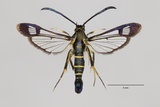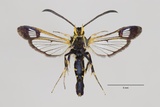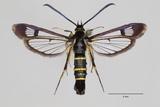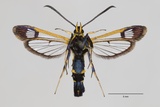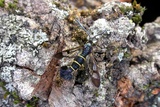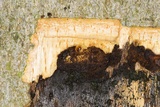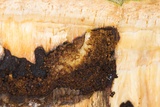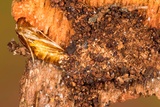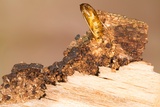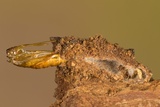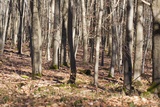Synanthedon spuleri (Fuchs, 1908) Species
Last modified: Jan. 9, 2023, 3:29 p.m.
In Belgium, this species was mentioned for the first time in 2018 and its occurrence seems to be restricted to the south-eastern provinces.
Details
- Classification
- Family: Sesiidae > Subfamily: Sesiinae > Tribus: Synanthedonini > Genus: Synanthedon > Species: Synanthedon spuleri
- Vernacular names
- Spulers wespvlinder (NL), Sésie de Spuler (FR), Spulers Glasflügler (DE)
- First mention in Belgium
- Meert R., Goossens R. & Garrevoet T. 2019. Synanthedon spuleri (Fuchs, 1908) (Lepidoptera: Sesiidae) nieuw voor België. — Phegea 47(2): 47–52. On page 47. view page
- Status
-
Native
Distribution
Imago
S. spuleri is a rather small species (14–24 mm) having a very similar morphological appearance as S. tipuliformis except for its forewing apex that is uniformly dark brown to black. The orange-ochreous scales between the veins in the apical area of the forewing, typical in S. tipuliformis, lack completely or are replaced by some small indistinct spots of some orange scales. As in S. tipuliformis, the abdomen has well defined yellow bands on the abdomen: 4 bands in the male and 3 bands in the female. The proboscis is well developed and functional.
The males are fairly weakly attracted to the pheromone developed for B. ichneumoniformis and are best lured in the afternoon but, as always, the optimal time span is very weather dependent.
Egg
The eggs are elliptically shaped and brown.
Bionomics
The female deposits the eggs close to injuries in the bark of a wide variety of hostplants. Often plants with damages caused by fungi (e.g. Gymnosporangium spp. in coniferous hostplants and Neonectria ditissima in Fagus spp. trees) are infested, giving the young larvae easy access into the plant. The larva feeds between bark and wood at the transition zone between living and dead tissue. The caterpillars hibernate in a loosely spun cocoon and are, in most cases, already fully developed. They pupate in springtime in a sturdy cocoon under the bark. The development of this species completes in one year; only very exceptionally in two years.
Flight periods
The adults fly from mid-May till mid-August. In very favourable xerothermic conditions, the flightperiod can already start at the end of April or the beginning of May.
Observed on
- Host plant (species):
- Juniperus communis, Juniperus chinensis, Fagus sylvatica, Betula pendula, Carpinus betulus and Corylus avellana
- Host plant (genera):
- Juniperus, Salix, Populus, Quercus, Prunus, Ulmus, Acer, Abies and Picea
This species is the most polyphagous of all Belgian Sesiidae species and the caterpillars even occur just as well in coniferous as in deciduous trees. They are most often found in Juniperus species and in Fagus spp. and very often associated with tumorous swellings caused by fungi.
